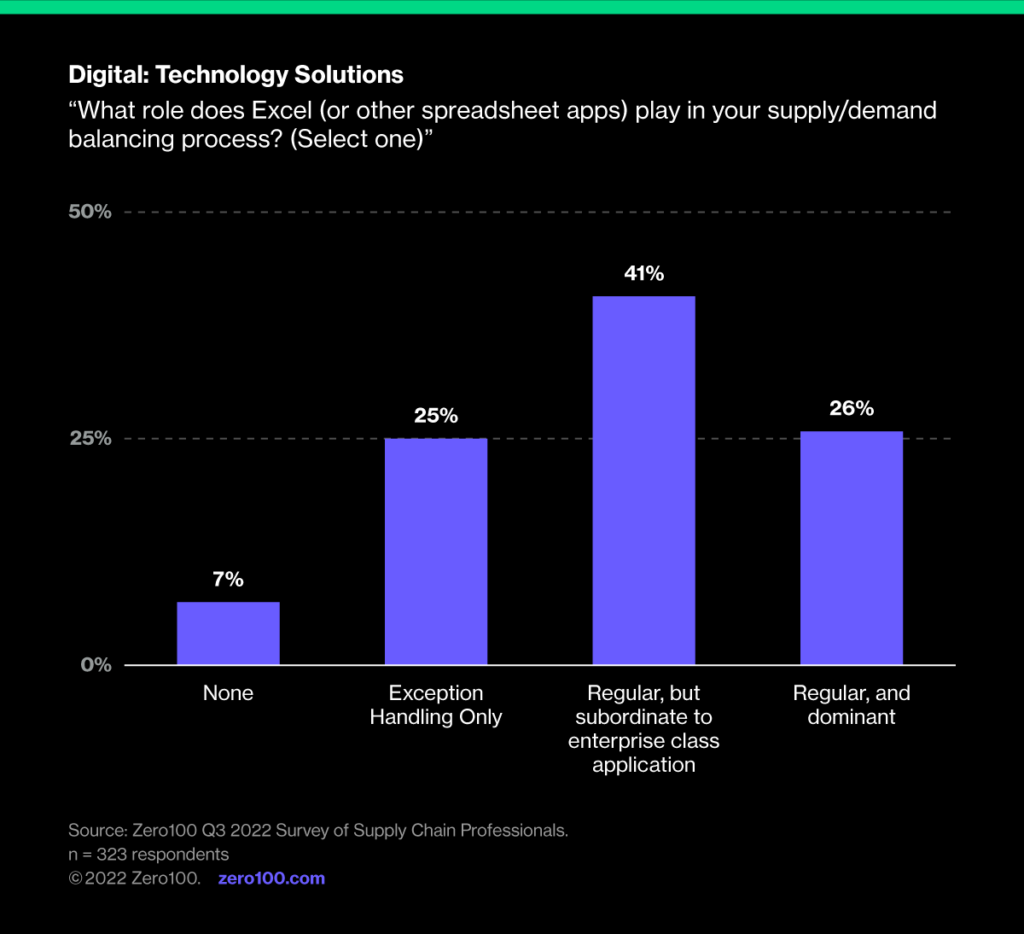
Apple’s Pivot to India Signals a Cleaner, Closer, Smarter Post-China Supply Chains
Brands across industries like Google, Hasbro, Bata, and Apple are making headway in long-brewing strategies to bring manufacturing closer to customers. To do so, they’ll need a digital upgrade to their systems.
Apple's manufacturing shift from China to India signals a milestone in the move away from global supply chains as we've come to know them: this week, a JPMorgan analyst shared that Apple plans to ramp-up non-China-based manufacturing from 5% to 25% of products by 2025. The winners in this story include India of course, whose push to attract manufacturing investment from big global brands is working, but also anyone hoping to see supply chains that are less reliant on cheap, invisible labor and long, complex transport lanes.
Shorter supply chains should mean less carbon, which is great, but closing the deal with customers will require a big upgrade in the sophistication of most companies' S&OP process to better handle the new set of tradeoffs between customers, carbon, and cash.
Manufacturing Diaspora
India's Apple win is not unique. Reports around the story include news of other big names like Google, Samsung and Xiaomi ramping up Indian manufacturing to improve access to the huge local market and to limit exposure to China's risks which still include COVID lockdowns and a shaky economy.
It's also not limited to tech products. Apparel and footwear brands are steadily decamping from Chinese production locations in favor of places like Vietnam, Indonesia, Egypt, and Turkey, as well as India, in part to diversify sourcing risks but also to seek out lower carbon energy mix suppliers as they prepare to report more detail on Scope 3 emissions.
And in the United States, where total manufacturing employment is now 67,000 jobs above pre-pandemic levels, the shift away from relying on China as factory-to-the-world is well underway. Conversations I've had with supply chain leaders from fashion apparel to semiconductors to pharmaceuticals confirm a long-brewing strategy to re-shore manufacturing by cracking the labor cost nut with investments in automation and a radical rethink of work design.
A New York Times article this week tried to balance its bullish headline (“Factory Jobs are Booming...”) with the following nugget: “Eight percent of the surveyed companies reported moving segments of their supply chain out of China to the United States in the past year, while another 16 percent had moved some operations to other countries. But 78 percent of the companies said they had not shifted any business away from China.” I know this is supposed to temper the article's angle but, for supply chain people, the fact the 24% of companies say they exited China in just one year is tantamount to a stampede.
A Digital Overhaul of Planning Is the Key
I'll skip over the more obvious and gaudy digital angles around robotics, augmented reality, and materials science innovation as enablers and focus on the humble, but critical question of planning. S&OP, as most of us understand it, is well-suited to the slow-boat-from-China supply chains we've built since the early 90's. Cost and availability duel in a perpetual dance while inventory with a dash of air freight smooths over the bumps. The cadence of S&OP can be monthly, with preparation of forecasts and supply plans often burning hundreds of person-hours up front. Spreadsheets persist in this environment because they can.

What happens in a post-China supply chain when you want to plan not only for inventory levels and locations, but also materials availability, factory capacity, customization promises, and special pricing or delivery promotions? These variables open up when production is closer to customers and “agility” starts to mean not only logistics, but also manufacturing and sourcing responses to quick-turn business opportunities.
Tack on the need to provide a personalized carbon score and you're suddenly trying to optimize cash across thousands of variables. This kind of planning problem requires a microservices architecture, built around constantly evolving and often ML-based algorithms like systems that Amazon and Walmart have built for retail operations, but reaching back to raw materials. It is technically possible, but not exactly ready for prime time yet.
Post-China Supply Chains Will Optimize for Customers, Carbon,and Cash
Shorter supply chains can cut carbon, and automation should help solve the capital/labor equation in places like the US and Europe. But the real unlock of localized, personalized, closed-loop supply chains depends on better planning above all else.
Critical Reading
THE NEW YORK TIMES
The Long Road to Driverless Trucks
Commentary: Despite self-driving trucks frequenting highways across California and Texas, the technology has a ways to go before reaching its full potential. Getting autonomous trucks on the road without “safety drivers” behind the wheel is the next big hurdle.
#autonomous #trucks
GREEN BIZ
Converting Captured Carbon into Rock Really is That Easy
Commentary: Icelandic company Carbfix has been dissolving CO2 into sparking water, injecting the mixture into a chosen subsurface, and storing as rocks for over a decade. Carbfix was recently pledged significant financial support by the EU, and the US Department of Defense is funding their research in Minnesota.
#carbon #capture
THE WALL STREET JOURNAL
Supply-Chain Decoupling From China Gets Sharper Teeth
Commentary: To combat rising geopolitical risks the EU has proposed two new laws: a ban on products made using forced labor, and an attempt to speed up domestic production, processing, and recycling of minerals critical for green energy applications. Both laws aim to minimize economic ties to China.
#china #manufacturing